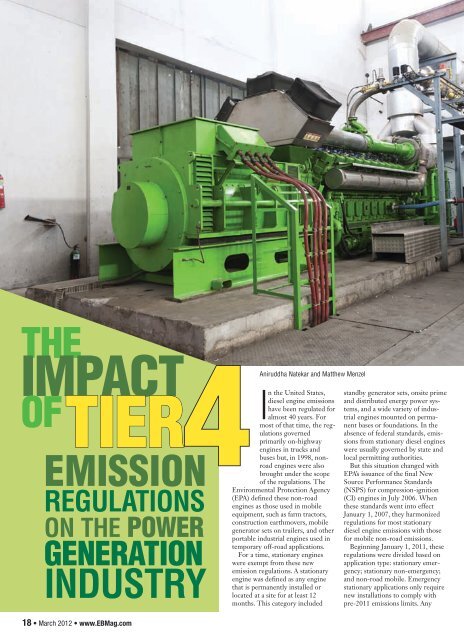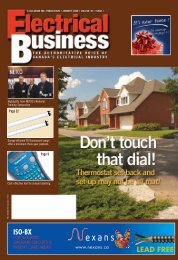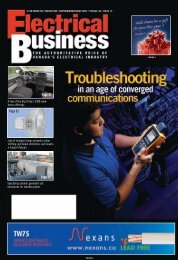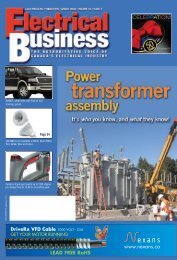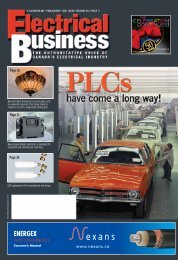where would we be without them? - Electrical Business Magazine
where would we be without them? - Electrical Business Magazine
where would we be without them? - Electrical Business Magazine
You also want an ePaper? Increase the reach of your titles
YUMPU automatically turns print PDFs into web optimized ePapers that Google loves.
THE<br />
IMPACT<br />
4Aniruddha Natekar and Matthew Menzel<br />
In the United States,<br />
OF<br />
TIER<br />
diesel engine emissions<br />
have <strong>be</strong>en regulated for<br />
almost 40 years. For<br />
most of that time, the regulations<br />
governed<br />
primarily on-highway<br />
engines in trucks and<br />
buses but, in 1998, nonroad<br />
engines <strong>we</strong>re also<br />
brought under the scope<br />
of the regulations. The<br />
Environmental Protection Agency<br />
(EPA) defined these non-road<br />
engines as those used in mobile<br />
equipment, such as farm tractors,<br />
construction earthmovers, mobile<br />
generator sets on trailers, and other<br />
portable industrial engines used in<br />
temporary off-road applications.<br />
For a time, stationary engines<br />
<strong>we</strong>re exempt from these new<br />
emission regulations. A stationary<br />
engine was defined as any engine<br />
that is permanently installed or<br />
located at a site for at least 12<br />
months. This category included<br />
EMISSION<br />
REGULATIONS<br />
ON THE POWER<br />
GENERATION<br />
INDUSTRY<br />
standby generator sets, onsite prime<br />
and distributed energy po<strong>we</strong>r systems,<br />
and a wide variety of industrial<br />
engines mounted on permanent<br />
bases or foundations. In the<br />
absence of federal standards, emissions<br />
from stationary diesel engines<br />
<strong>we</strong>re usually governed by state and<br />
local permitting authorities.<br />
But this situation changed with<br />
EPA’s issuance of the final New<br />
Source Performance Standards<br />
(NSPS) for compression-ignition<br />
(CI) engines in July 2006. When<br />
these standards <strong>we</strong>nt into effect<br />
January 1, 2007, they harmonized<br />
regulations for most stationary<br />
diesel engine emissions with those<br />
for mobile non-road emissions.<br />
Beginning January 1, 2011, these<br />
regulations <strong>we</strong>re divided based on<br />
application type: stationary emergency;<br />
stationary non-emergency;<br />
and non-road mobile. Emergency<br />
stationary applications only require<br />
new installations to comply with<br />
pre-2011 emissions limits. Any<br />
18 • March 2012 • www.EBMag.com


